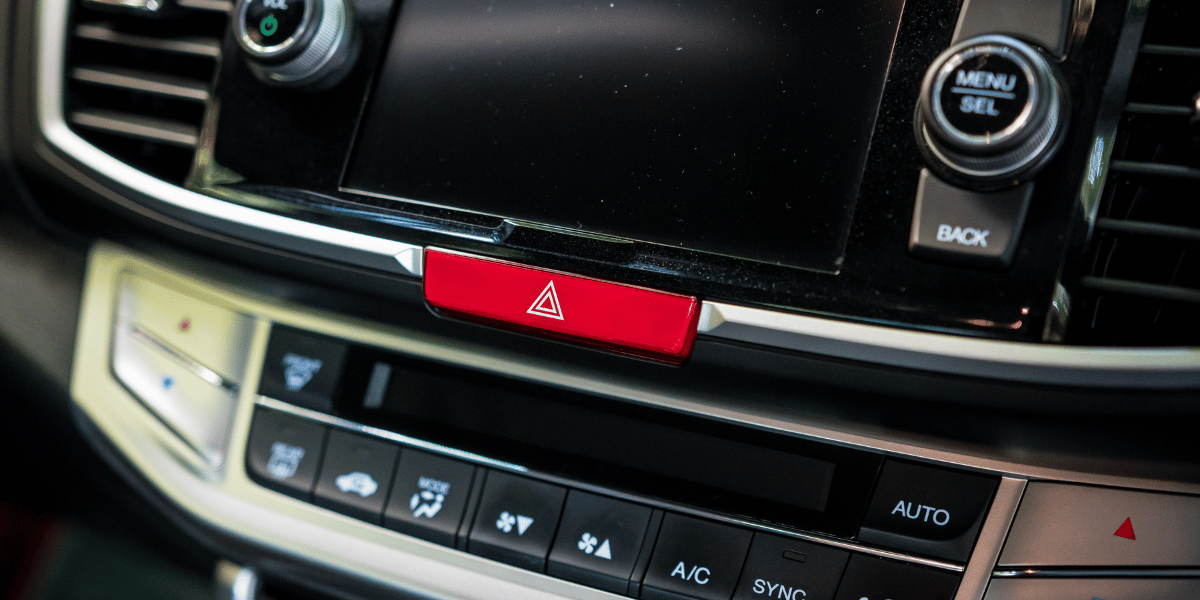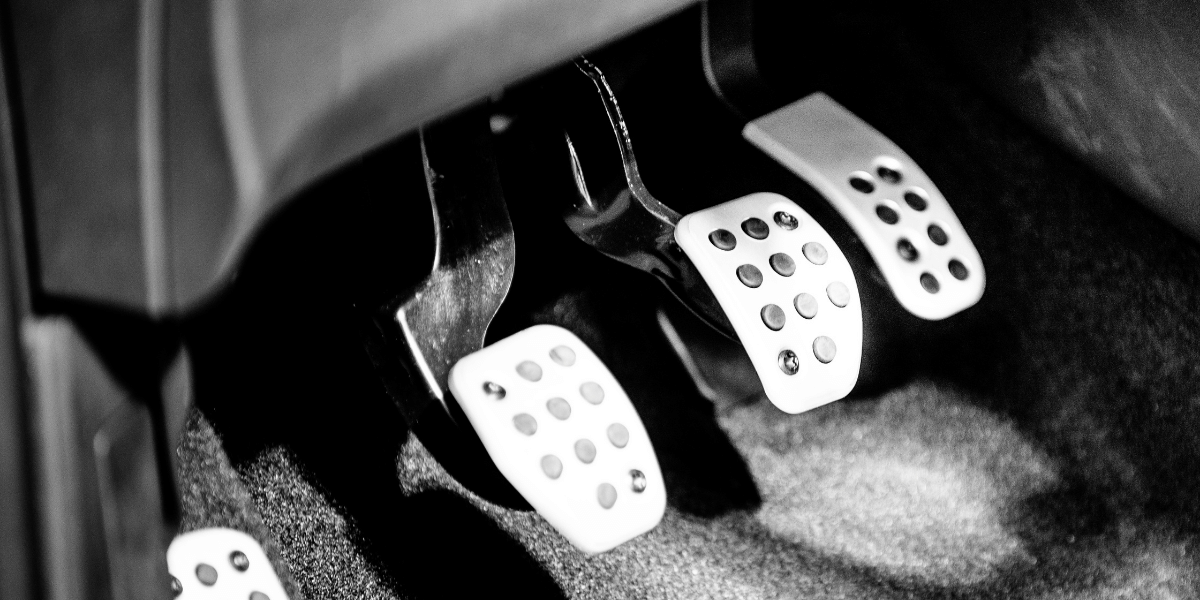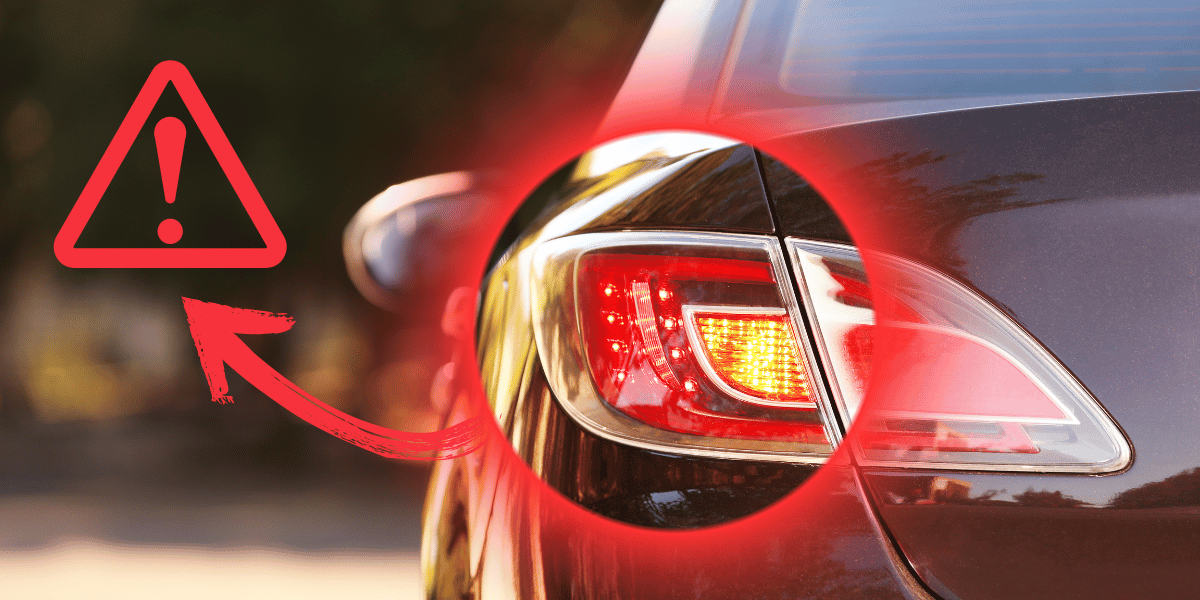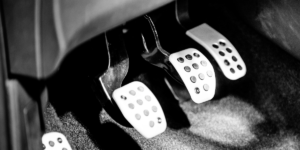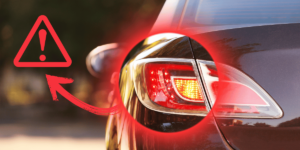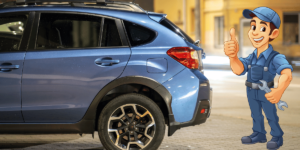The Neutral Safety Switch in your car is very important for making sure that the engine starts safely. But have you ever been in a situation where your car just won’t start and you think the Neutral Safety Switch might be to blame? This blog post will take the mystery out of the Neutral Safety Switch by explaining how it works and showing you how to get around it. Along the way, we’ll answer all of your frequently asked questions. All new cars have neutral safety switches which are an important part of keeping the car safe.
In the field of automobile engineering, the neutral safety switch is very important for keeping you safe and making sure your car works right. You might not notice this small, unassuming gadget, but it’s the key to stopping something that could be dangerous: starting your car in gear.
We will learn a lot about neutral safety switches in this in-depth guide. We’ll talk about their main purpose and how important they are for car safety. Plus, we’ll talk about when and why you might need to replace a broken switch and show you how to do it. In addition, we’ll talk about different ways to skip the switch, giving you an idea of when it might be necessary to do so and warning you to be careful.
This guide will help you understand, identify, and fix problems with the neutral safety switch, whether you’re a car enthusiast, a do-it-yourself mechanic, or just someone who is interested in how cars work. Therefore, let us begin to explore the insides of this quiet but necessary part of your car’s transmission system.
What Does a Neutral Safety Switch Do?
Imagine that you are trying to start your car but it is in park, neutral, or drive. That’s where the Neutral Safety Switch comes in handy. The engine will not start unless the gear selector is in “park” or “neutral.” This is a safety measure. It works by closing an electrical connection when the transmission is in park or neutral. The starter can turn on and start the engine because of this circuit. The circuit is not complete, though, if the gearbox is in gear, and the engine won’t start.
The neutral safety switch, which is also known as the “inhibitor switch” or “range sensor” in some cars, is a very basic but very important part of your car’s transmission. The main job of this part is to make sure that your car starts only when it’s safe and efficient to do so. The neutral safety switch basically adds another layer of protection by making sure that your car stays still when you want to start the engine. This lowers the chance that it will move in ways that you don’t expect, which could be dangerous. There’s a simple but clever new invention that makes driving your car much safer and more reliable.
Can a Bad Neutral Safety Switch Cause Shift Problems?
Yes, a bad neutral safety switch can cause shift problems in an automatic transmission. Now that we know how important the neutral safety switch is for keeping the engine from starting in a dangerous way, let’s look at what happens when this seemingly small part stops working right. A bad or broken neutral safety switch can cause a lot of problems, especially when it comes to changing gears in an automatic transmission. It also stops the car from moving out of park or neutral unless they press the brake pedal.
What happens when the neutral safety switch doesn’t work?
If there is a problem with the neutral safety switch, it could send the PCM the wrong signal. This could make the PCM shift the transmission at the wrong time or not at all. If your neutral safety switch stops working or starts to break down, it can affect how your car works in big ways. Here are some of the things that could happen:
Impact on Gear Shift:
If you have an automatic transmission, one of the most obvious problems that can happen is that the neutral safety switch won’t work right. Because the neutral safety switch makes sure the car will only start in “Park” or “Neutral,” a broken switch can make it hard to change gears. These problems could show up as:
- Difficulty Starting: If the neutral safety switch isn’t working right, the car might not start at all, even if the gear shifter is in the right place, which is usually “Park” or “Neutral.” This can be annoying and make things harder because it can leave you stuck.
- Stalling: The switch may sometimes stop working, which could cause your car to stop moving while you’re driving. This is especially risky when there is a lot of traffic or the road is busy.
- Unexpected Gear changes: Sometimes, a bad neutral safety switch can cause unexpected gear changes, like going from “Drive” to “Neutral” while driving. This could be very dangerous for your safety.
Troubleshooting Neutral Safety Switch Problems
It is important to have a trained mechanic check the neutral safety switch if you are having shift problems. Here are some things you can try to fix the switch on your own:
- Check the amount and condition of the transmission fluid. If the fluid is low or dirty, it can make changing difficult.
- Make sure that the transmission selector lever is fully in the place you want it to be in.
- To start the car, put it in neutral and park. You might need to replace the neutral safety switch if the engine will only start in neutral.
- Check the links between the wires and the neutral safety switch. Check to see if the links are clean and safe.
- If you’ve done all of these things and are still sure that the neutral safety switch is broken, you should have a trained mechanic replace it.
Important note about safety: It is not a good idea to skip the neutral safety switch because it could be dangerous. It is best to have your car taken to a mechanic if you can’t start it in park or neutral.
When should I replace my neutral safety switch?
The neutral safety switch in your car is an important part for making sure it runs safely and reliably. Like any other part, it may wear out or break down over time, requiring repair. We’ll talk about when and why you might need to change a neutral safety switch, how to do it, and why it’s important to use high-quality replacement parts in this section.
When to Change a Neutral Safety Switch and Why?
If you have any of these problems with your neutral safety switch, you may need to repair it:
- It won’t start in either park or neutral.
- Even if the transmission is not in park or neutral, the engine will start in any gear.
- The transmission changes in strange ways, like going into neutral while you’re driving or not wanting to leave park.
- On the dashboard, the transmission danger light is on.
- If a professional repair says that the switch is what’s wrong with your car, they may suggest that you get a new one. It’s important to talk to a professional about these kinds of problems to make sure you get the right evaluation.
It is important to have a trained mechanic check the neutral safety switch if you are having any of these issues. If it turns out that the switch is broken, it needs to be changed right away.
How to Replace a Neutral Safety Switch?
The steps you need to take to replace a neutral safety switch depend on what kind of car you have. Here is a general outline of the process, though:
- Take the negative battery wire off.
- Find the safety switch for neutral. Most of the time, it’s on the side of the transmission.
- Take the electricity wires away from the neutral safety switch.
- Take off the bolts that hold the neutral safety switch to the transmission.
- Put the new neutral safety switch in the same way you took the old one out.
- Connect the wires back to the neutral safety switch.
- Plug in the negative battery connection.
How to Do It Step by Step guide
- Put your car in park on a flat surface and press the parking brake.
- Open the hood and take the negative battery wire off.
- Find the safety switch for neutral. Most of the time, it’s on the side of the transmission.
- Take the electricity wires away from the neutral safety switch.
- Take off the bolts that hold the neutral safety switch to the transmission.
- Take off the safety switch for neutral.
- Put the new neutral safety switch in the same way you took the old one out.
- Connect the wires back to the neutral safety switch.
- Plug in the negative battery connection.
- Start the car and check the safety switch for neutral.
Why it’s Important to Use High-Quality Replacement Parts?
When you change a neutral safety switch, it’s important to use good replacement parts. A cheap substitute switch might not work right and could break down early. This might make your transmission have even more trouble. It is also important to have a trained mechanic change the neutral safety switch. A mechanic will know how to change the switch correctly and make sure it works right.
Safety: It is not a good idea to skip the neutral safety switch because it could be dangerous. It is best to have your car taken to a mechanic if you can’t start it in park or neutral.
Bypass Methods for Neutral Safety Switches
It may be necessary to go around the neutral safety switch in some cases. But you need to be very careful about this because it could affect your car’s safety features. In this part, we’ll talk about the situations in which you might need to bypass the neutral safety switch, give you step-by-step instructions for different car models, and weigh the pros and cons of this method.
When to Bypass a Neutral Safety Switch?
You may need to bypass a neutral safety switch for a few good reasons, including:
- Situations of Emergency: If your car’s neutral safety switch doesn’t work, you might not be able to start it when you need to in an emergency. You can temporarily get around it to get to safety or the closest repair shop.
- Someone needs to look at your car because it won’t start in park or neutral.
- You need to pull your car behind an RV or motorhome.
- You are trying to figure out what’s wrong with the engine or starting system.
- Off-Road or Custom Vehicles: Off-road vehicles or machines made just for you might not have to follow the same safety rules as normal vehicles. You might be able to get around the switch this way, but you should be careful.
- Limited Accessibility: If you can’t easily get to the neutral safety switch, like on some bikes, you can quickly get around it by bypassing it.
Note: Bypassing the neutral safety switch is a safety hazard and should only be done as a last resort. If you are not sure how to bypass the switch safely, it is best to consult a qualified mechanic.
Step-by-Step Bypass Instructions for Different Vehicle Models:
Depending on the make and type of your car, there are specific steps involved in bypassing a neutral safety switch. However, the following general steps will help you bypass the switch on a few well-known cars:
Bypass for the Ford Neutral Safety Switch
- Find the safety switch for neutral. Most of the time, it’s on the side of the transmission.
- Take the two electrical plugs off of the safety switch that is neutral.
- Connect the two electricity plugs together by touching them. Bypassing the switch, the engine will start in any gear.
Ford Neutral Safety Switch Bypass
- Find the safety switch for neutral. Most of the time, it’s on the side of the transmission.
- Take the wire plug off of the neutral safety switch.
- Connect the two wires on the plug with a jumper. Bypassing the switch, the engine will start in any gear.
Dodge Ram Neutral Safety Switch Bypass
- Locate the neutral safety switch. It is usually located on the side of the transmission.
- Disconnect the electrical connector from the neutral safety switch.
- Jumper the two wires on the electrical connector together. This will bypass the switch and allow the engine to start in any gear.
2004 Grand Cherokee Neutral Safety Switch Bypass
- Find the safety switch for neutral. Most of the time, it’s on the side of the transmission.
- Take the wire plug off of the neutral safety switch.
- Connect the two wires on the plug with a jumper. Bypassing the switch, the engine will start in any gear.
Silverado Bypass for the Neutral Safety Switch
- Find the safety switch for neutral. Most of the time, it’s on the side of the transmission.
- Take the wire plug off of the neutral safety switch.
- Connect the two wires on the plug with a jumper. Bypassing the switch, the engine will start in any gear.
How to Bypass Neutral Safety Switch on a Motorcycle
- Find the safety switch for neutral. Most of the time, it’s on the side of the engine or transmission.
- Take the wire plug off of the neutral safety switch.
- Connect the two wires on the plug with a jumper. The switch will be bypassed, allowing the bike to start.
Pros and Cons of Bypassing the Switch:
Pros:
- Should the neutral safety switch stop working, this can still let you start your car.
- You might be able to pull your car behind a motorhome or RV with it.
- It might help you figure out what’s wrong with the transmission or starting system.
- Useful for off-road or custom vehicles with different safety requirements.
Cons:
- It is dangerous to bypass the neutral safety switch.
- If you start the car in gear, it could hurt the transmission.
- In the future, it might be harder to sell your car because of this.
- Should only be used as a temporary solution until the switch can be repaired or replaced.
If you want to avoid using the neutral safety switch, you should be very careful because it can be useful in the short term. Having the switch properly fixed or replaced is always a good idea to keep your car safe and running properly.
Bypassing Safety Switches in Other Equipment
A lot of different kinds of machinery use safety switches, like tractors, lawnmowers, and zero-turn mowers. It is the job of these switches to stop the machinery from working if the user is not in the right place or if the machine is not safe.
It’s not a good idea to try to get around safety switches because it can be risky. To avoid harm, it is best to talk to a trained mechanic before you try to bypass a safety switch.
- Bypassing Safety Switches on Kubota Tractors
You will need to find and separate the electrical connectors from the safety switches on a Kubota tractor in order to bypass them. On most Kubota tractors, the safety switches are on the seat, the parking brake, or the PTO.
After taking the electrical connectors off, you can start the tractor and drive it without the safety switches.
- Bypassing Safety Switches on Riding Mowers
Finding and unplugging the electrical plugs from the safety switches on a riding mower is required to bypass them. On most riding mowers, the safety switches are on the seat, the parking brake, and the blades.
You can start the mower and use it without the safety switches after disconnecting the electricity cords.
- Bypassing Safety Switches on Zero-Turn Mowers
Locate and disconnect the electrical connectors from the safety switches on a zero-turn mower in order to bypass them. On most zero-turn mowers, the safety switches are on the seat, the parking brake, and the blades.
You can start the mower and use it without the safety switches after disconnecting the electricity cords.
Take care of safety
It can be dangerous to go around safety switches. For your own safety, remember these things:
- Before working on any electrical parts, you should always take the battery out.
- Avoid making any electrical connections too tight, as this can damage them.
- Before you use the machine without the safety switches, make sure it is safe of course.
- When you use a machine, be careful and know the risks that come with ignoring safety switches.
- Bypassing safety switches is not advised and should only be done as a last option.
How much does it cost to install a neutral safety switch?
| Vehicle | Replacement Cost (USD) |
|---|---|
| Ford F-150 | $100-$150 |
| Dodge Ram | $120-$180 |
| 2004 Grand Cherokee | $140-$200 |
| Silverado | $160-$220 |
| Honda Accord | $80-$140 |
| Toyota Camry | $90-$150 |
| Nissan Altima | $100-$160 |
| Chevrolet Cruze | $110-$170 |
| Ford Fiesta | $120-$180 |
| Hyundai Elantra | $130-$190 |
| Kia Forte | $140-$200 |
Keep in mind that these prices are only rough guesses. The real cost of replacing a neutral safety switch will rely on the type of car, where it’s located, and how much the mechanic charges for their time. Also, keep in mind that these prices only cover the switch itself and not the cost of having someone install it. How much it costs to have a mechanic install a neutral safety switch depends on the type of car and where the mechanic is located.
The Best Neutral Safety Switches on Amazon: Our Top Picks for You
Not sure which neutral safety switch to choose? Here are our top 5 picks for your car. The neutral safety switch is one of the most important safety features in your car. It stops the engine from starting unless the transmission is in park or neutral. If the brake pedal is not pushed, you can’t shift out of park or neutral either. It could be dangerous if your neutral safety switch breaks.
This is why it’s important to get a good neutral safety switch if you need to get a new one. Thank you for your help. Based on customer reviews and scores, we have found the best neutral safety switches on Amazon. From budget-friendly options to premium models, we have something for everyone.
Here are some of the best neutral safety switches on Amazon, based on customer reviews and ratings:
-
ACDelco GM Original Equipment D2256C Park/Neutral Position and Back-Up Lamp Switch: This is a high-quality OEM neutral safety switch from ACDelco. It is compatible with a wide range of GM vehicles, and it is backed by a lifetime warranty. Click here to Buy Now
-
Standard Motor Products NS166 Neutral Safety Switch: This is a popular aftermarket neutral safety switch that is compatible with a wide range of vehicles. It is well-made and affordable, and it comes with a one-year warranty. Click here to Buy Now
-
Wells NS166 Neutral Safety Switch: This is another popular aftermarket neutral safety switch that is compatible with a wide range of vehicles. It is well-made and affordable, and it comes with a one-year warranty. Click here to Buy Now
-
Dorman 904-215 Neutral Safety Switch: This is a durable and affordable neutral safety switch from Dorman. It is compatible with a wide range of vehicles, and it comes with a one-year warranty. Click here to Buy Now
-
Beck Arnley 179-2001 Neutral Safety Switch: This is a high-quality aftermarket neutral safety switch from Beck Arnley. It is compatible with a wide range of vehicles, and it comes with a one-year warranty. Click here to Buy Now
When choosing a neutral safety switch, it is important to make sure that it is compatible with your vehicle. You can check the compatibility information on the product page or contact the manufacturer.
You should also make sure that the neutral safety switch is backed by a warranty. This will protect you in case the switch fails prematurely.
Where is the neutral safety switch located?
Knowing where the neutral safety switch is usually located in most cars is helpful for anyone working on their transmission or trying to figure out why their car won’t start or shift. The neutral safety switch is usually located in the trunk of most cars. In this part, we’ll talk about where to find it in popular car models like the 2013 Ford Focus and the 2010 Dodge Journey.
General Location in Most Vehicles:
Most of the time, the neutral safety switch is on or near the engine in most cars. This placement is smart because the switch needs to be close to the gear selector linkage so that it can correctly tell whether the transmission is in “Park” or “Neutral.” To find the switch, follow these general steps:
- Find the Transmission: Figure out where the transmission is first. It’s usually under the car. Depending on the make and type, the transmission may be on the passenger side or the driver side.
- Follow the Linkage: Once you’ve found the transmission, follow the linkage that goes from the gear shifter inside the car to the transmission. Most of the time, the neutral safety switch is located along this chain or close to it.
- Check the Transmission Housing: Carefully look through the transmission housing for a small part that is connected to the linkage and is either rectangular or oblong in shape. Most of the time, this part is the neutral safety switch. Bolts or clips may hold it in place.
- Check Your Vehicle’s Service Manual: To find out exactly where the neutral safety switch is located in your type of vehicle, look at the manufacturer’s service manual or an aftermarket repair manual. These guides have clear pictures and written explanations that will help you find the switch’s exact location.
To help you find the neutral safety switch in your 2013 Ford Focus or 2010 Dodge Journey, here are some more exact steps:
The 2013 Ford Focus
- The neutral safety switch on a 2013 Ford Focus is generally on the passenger side of the transmission, near the front of the car.
- To get to it, you might have to take off some trunk shielding or covers.
- When you go to this place, make sure you follow all safety rules and the right way to lift a vehicle.
The 2010 Dodge Journey
- In a 2010 Dodge Journey, the neutral safety switch is on the side of the transmission, close to the front of the car. The switch is small and black, and it has two electricity plugs on it.
- The neutral safety switch on the 2010 Dodge Journey is also on or near the transmission. It is usually near the front, but it is on the driver’s side.
- It might be possible to get to from under the car without taking off big chunks of the body.
Keep in mind that the neutral safety switch may not be in the same place on every model, even from the same maker. So, it’s important to look at your car’s service manual or talk to a trained mechanic to make sure you correctly identify and take care of the switch. When you’re trying to figure out what’s wrong with your transmission or fix it, knowing where to find the neutral safety switch can save you time and stress.
How do I test my neutral safety switch?
It is important to test and adjust the neutral safety switch correctly so that your car will consistently start in “Park” or “Neutral.” We will talk about how to test the switch with a multimeter and how to adjust it so that it works best in this part. We will also include specific information about the 4L60E and Silverado neutral safety switches.
Testing a Neutral Safety Switch with a Multimeter:
Here’s how to use a voltmeter to check a neutral safety switch:
- Set the multimeter to the ohms setting.
- Take the electricity wires away from the neutral safety switch.
- Connect the leads of the multimeter to the neutral safety switch’s two ends.
- The switch is working right if the voltmeter shows 0 ohms.
- It is necessary to change the switch if the multimeter shows “infinity.”
Adjusting a Neutral Safety Switch
To adjust a neutral safety switch, follow these steps:
- Take out the bolts that hold the switch to the engine.
- When the transmission is in park or neutral, turn the switch a little until the voltmeter reads 0 ohms.
- Put the electrical links back together and tighten the mounting bolts.
Specific Details for the 4L60E and Silverado Neutral Safety Switches
The neutral safety switches for the 4L60E and Silverado are on the side of the transmission, close to where the shifter starts.
Follow the steps above to change the 4L60E and Silverado neutral safety switches. However, it’s important to keep in mind that these switches can be hard to work with. A trained mechanic is the best person to make changes to the switch. Here are some more tips on how to test and change neutral safety switches:
- Before working on the neutral safety switch, you should always take the battery out.
- Avoid making the fixing bolts too tight, as this could damage the switch.
- Talk to a skilled mechanic if you don’t feel comfortable testing or adjusting the neutral safety switch yourself.
Frequently Asked Questions
Q: What is a neutral safety switch?
A: A neutral safety switch is a crucial component in a vehicle’s transmission system. Its primary role is to prevent the engine from starting unless the transmission is in the “Park” or “Neutral” position, enhancing vehicle safety.
Q: What are the symptoms of a bad neutral safety switch?
A: Common symptoms of a malfunctioning neutral safety switch include difficulty starting the engine, gear shifting issues, stalling when shifting gears, and the engine starting while the vehicle is in gear.
Q: Can I bypass a neutral safety switch?
A: Bypassing a neutral safety switch is possible, but it should be done cautiously and only in specific situations. It’s generally recommended as a temporary measure until the switch is repaired or replaced.
Q: What should I do if I think my neutral safety switch is bad?
A: If you suspect a faulty neutral safety switch, it’s advisable to have it diagnosed by a professional mechanic. They can provide an accurate assessment and recommend the necessary repairs.
Q: How much does it cost to replace a neutral safety switch?
A: The cost of replacing a neutral safety switch varies depending on the make and model of the vehicle and the labor rates of the service provider. It typically ranges from $100 to $250, including parts and labor.
Q: How to bypass a neutral safety switch on an automatic transmission?
A: Bypassing a neutral safety switch in an automatic transmission generally involves disconnecting the wires related to the switch and connecting them together or using a jumper wire. This should be done with caution and as a temporary solution.
Q: How to bypass a neutral safety switch on a tractor?
A: Bypassing a safety switch on a tractor, such as the seat safety switch, usually involves disconnecting wires and connecting them together. It should only be done in specific situations and with careful consideration of safety risks.
Q: Where is the 2015 Honda CRV neutral safety switch located?
A: The exact location of the neutral safety switch in a 2015 Honda CRV may vary. Consult your vehicle’s service manual or a professional mechanic for precise guidance on its location.
Q: Can a bad neutral safety switch cause shift problems?
A: Yes, a malfunctioning neutral safety switch can lead to shifting problems in an automatic transmission, including difficulties in shifting gears and unexpected gear shifts.
Q: What happens if the neutral safety switch is bad?
A: A bad neutral safety switch can result in a range of issues, such as starting problems, stalling, and gear shifting difficulties. It is a critical component for the safe operation of the vehicle.
Q: How long does it take to replace a neutral safety switch?
A: The time required to replace a neutral safety switch varies depending on the vehicle and the experience of the mechanic. Typically, it can take 1-2 hours.
Q: How do you start a car with a bad neutral safety switch?
A: Starting a car with a bad neutral safety switch should be avoided, as it can be dangerous. It’s essential to have the switch repaired or replaced to ensure safe and reliable vehicle operation.
Q: How many safety switches are on a riding mower?
A: Riding mowers may have multiple safety switches, including the seat safety switch, blade engagement safety switch, and others, depending on the model and features.
Q: Can I drive with a bad neutral safety switch?
A: Driving with a bad neutral safety switch is not recommended due to safety concerns. It’s important to address the issue promptly to ensure safe vehicle operation.
Conclusion
We’ve talked about the most important parts of the neutral safety switch, how it works, and how to deal with problems that might come up with it in this detailed guide. People often forget about the neutral safety switch, but it is very important for keeping the car safe to drive. Having a switch that doesn’t work right can cause many issues, so it’s important to repair it and test it properly to keep things safe and reliable. There are times when you may need to bypass the switch, but you should be careful because it could put your safety at risk.
A neutral safety switch that works properly is an important part of keeping your car safe because it stops crashes and unsafe gear shifts. People who read this should be careful when using these tools and maybe even get professional help if the problems are too complicated. By putting safety first and trusting the knowledge of technicians, you can keep your car a safe and effective way to get around.
